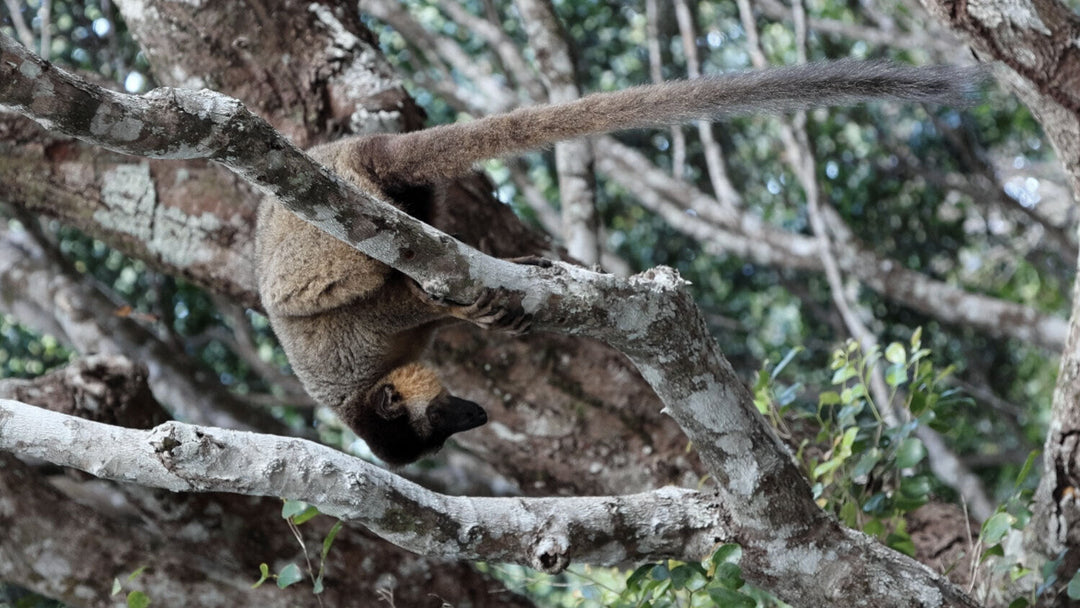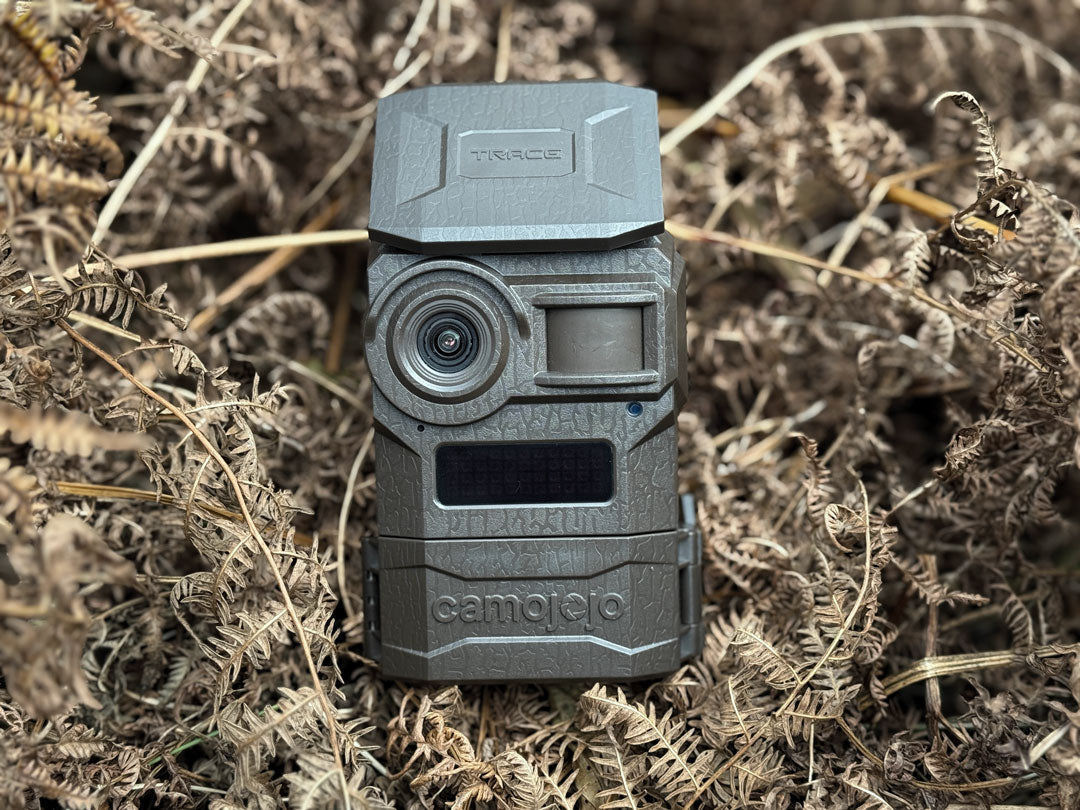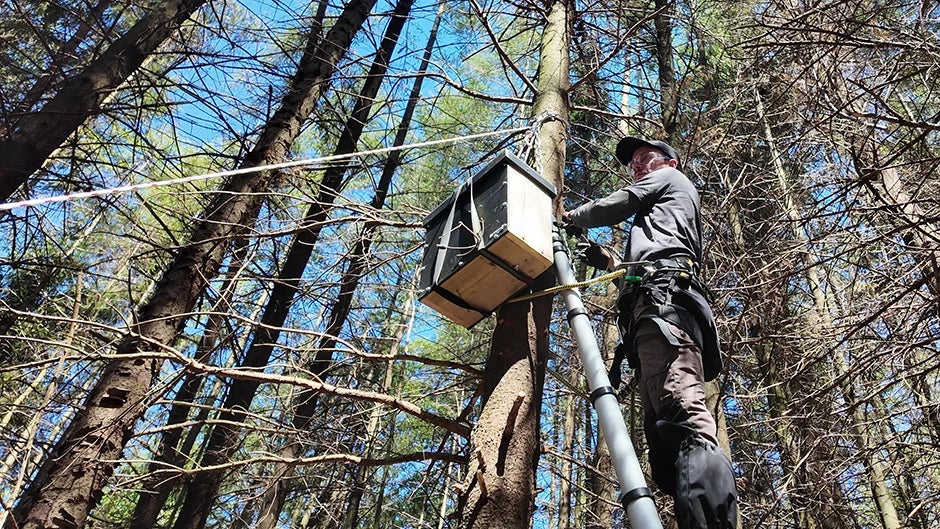Challenging winter weather makes for stunning wolf footage
With temperatures well below zero and a 2 feet of snow to contend with for several months, winter in Minnesota is a challenging time for camera trap fieldwork, but the cameras must keep rolling!
In this guest blog, Austin Homkes, Field Biologist for the Voyageurs Wolf Project shares insight into the need to monitor wolves in northern Minnesota throughout the chilly winter months and the kind of the challenges this entails. Enjoy!
While deploying over 175 trail cameras takes a good amount of effort, maintaining that many cameras is when the work really begins. We deploy a web of trail cameras across our study area to estimate wolf pack sizes in the winter months, when wolves travel together as a pack. Trail cameras are a fairly reliable tool, but nothing is perfect. Beyond the camera operating in negative temperatures, there are a myriad of problems that hinder the proper function of a trail camera. For example, if we place a camera on a logging road, a snowplow may move a large berm of snow in front of the camera. If the camera is on a snowmobile trail, every time a snowmobile travels by, the camera records a video which quickly fills up the camera’s memory card. Or even a branch, heavy with snow, can dangle in front of a camera blocking the intended view. These are just a few of the hazards that we address when maintaining a network of cameras over a 2,000 km2 area.
While we can’t control where the wolves travel, we can do our best to ensure that when a pack trots by a camera it takes a clear video of each animal. This means periodic visits to each camera. We reach most of our cameras by snowmobile, both on and off trail. However, reaching cameras spread across a large area often means traveling over 100 miles in a day. Some of our cameras require strapping on some snowshoes and breaking trail in the 2 feet of powdery snow that blanketed the Northwoods this year. We put in all of this effort because having accurate counts of each pack in our study area is a vital piece of information that we cannot get in the spring, summer, or fall when pack members travel around their territory primary alone. It is now or never, and the number of wolves in each pack has important implications for both how many wolves in a pack survived the previous year, but also how many wolves will be killing prey and providing for the next generation in each pack.

Our pack count efforts this winter, like most winters, have had great successes and frustrating struggles. Because wild wolves are relatively unpredictable, we sometimes capture numerous videos of one pack during the winter and struggle to capture 2 or 3 videos of others. For example, one of the packs we study—the Moonshadow Pack—recently lost its breeding male who died of natural causes. The Moonshadow pack disbanded shortly after his death and a new pack quickly filled the vacancy. We knew little about this new pack. Fortunately, we had around 10 video trail cameras placed in this new unknown pack’s territory. We checked the cameras in early March and were delighted to find that we captured numerous videos of the new pack. Judging by the size and appearance of the 4 wolves that make up this new pack, the pack consists of a breeding pair and their two pups from this past spring. Without knowing it, these wolves became the newest study animals of the Voyageurs Wolf Project.

This winter, the wolves in the next territory to the north of the Moonshadow pack have been much more elusive. We know this pack, the Half-Moon pack, consisted of a breeding pair and their 8 pups this past spring. We were unsure exactly how many of the pups survived to this winter as it is not uncommon for many of these pups to die of a variety of causes over the year. Despite having cameras spread throughout their territory, we captured few videos of this pack. Fortunately, we have 2 or 3 videos showing the Half-Moon breeding pair and one other wolf. Although it is certainly possible only 1 of the 8 pups remain, we are hopeful that we will capture several more videos of this pack in the next month to confirm our initial counts of the Half-Moon pack.

As the days grow steadily longer and we see the first signs of warm days ahead, we know it won’t be long until small helpless pups will be born. But for now, the wolves and the woods are still locked in winter’s grip which means we have a few more chances to catch wolves being wolves as a pack on camera.
Learn more about Voyageurs Wolf Project and their fantastic wolf conservation work over on our project pages.


